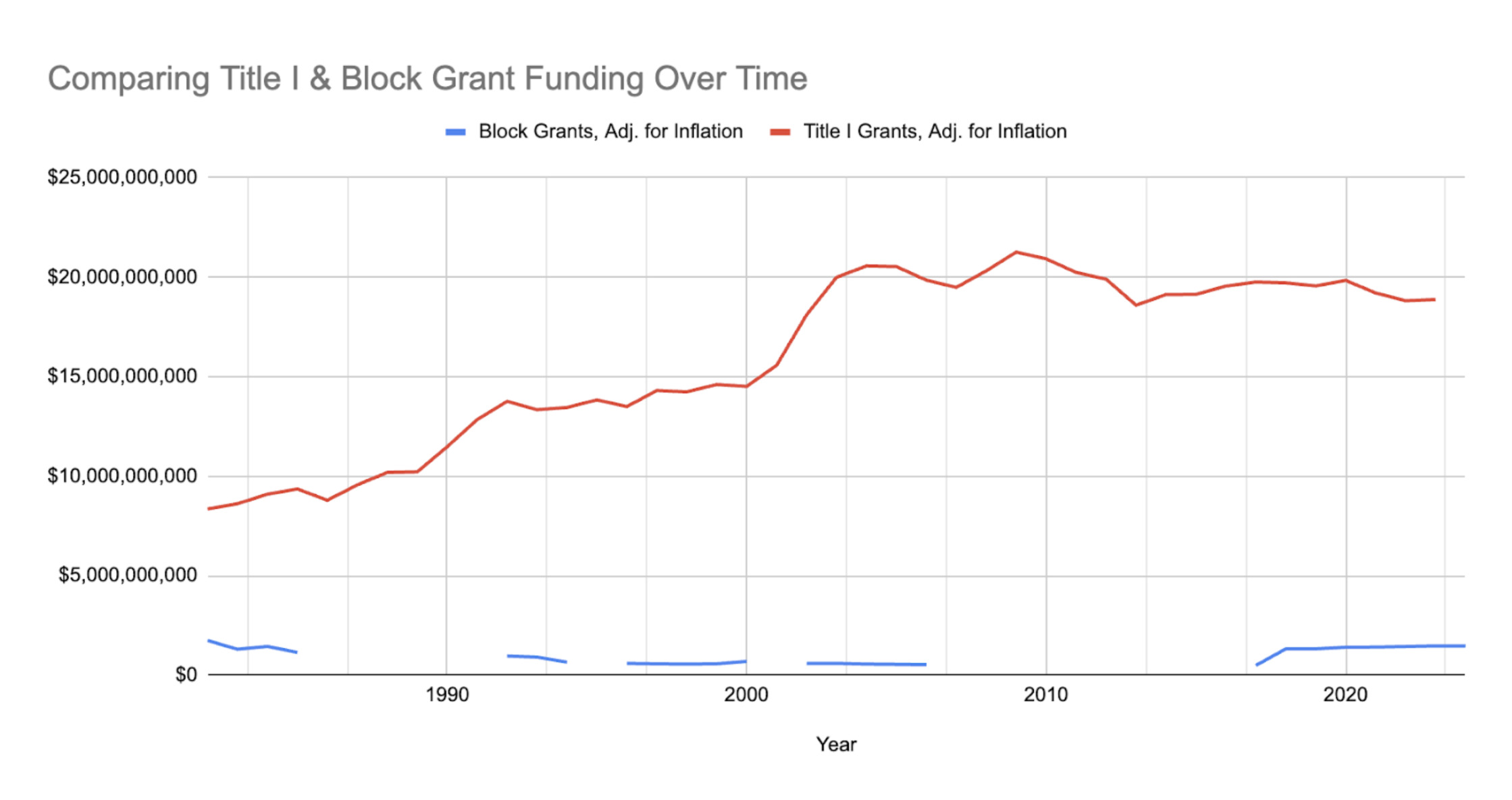Today marks 60 years since Title I was signed into law–one of the most impactful civil rights investments in the history of our nation’s schools. Since 1965, Title I has delivered federal funding to schools serving high concentrations of students in poverty–helping to provide the resources, educators, and opportunities that every child deserves, regardless of their neighborhood.
It’s easy to look back on the last 60 years and celebrate what Title I has accomplished. Today, Title I ensures access to educational opportunities for more than 26 million children across nearly 95% of school districts–urban, rural, and suburban. It has narrowed achievement gaps, improved graduation rates, and created opportunities for social mobility for millions of families.
But this anniversary demands more than just reflection and celebration. At this moment, Title I – along with the very fabric of public education – is under threat.
Project 2025 calls for Title I to be block granted to states and phased out entirely in the next ten years. Block granting federal funds would remove federal safeguards that ensure money is directed to high-poverty districts, allowing states to divert funds away from the students who need them most. More recently, twelve state chiefs submitted a letter to Secretary McMahon affirming their support for block granting ESEA title formula funds. Iowa and Oklahoma have both expressed interest in submitting waivers for those flexibilities (though they have completely ignored the standard procedures to do so).
The Department of Education has claimed to embrace these shifts, citing a broader goal to return power to the states. But look no further than last week’s ESSER cuts to see how that will actually play out. Over the course of the pandemic, both the Trump and Biden administrations made unprecedented investments in education, granting maximum flexibility to states and districts to spend nearly $200 billion in COVID relief funds. Just last week, the Trump administration took the remaining funds back. With minimal notice, the Department of Education rescinded nearly $3 billion, claiming that the continued use of funds “is not consistent with the Department’s priorities and thus not a worthwhile exercise of its discretion.”
Who’s to say that they won’t do the same if states have maximum flexibility over Title I? The Trump Administration has already made it exceptionally clear that states refusing to align with its agenda will risk losing their federal funding.
Let me be clear: Block granting is a fast track to defunding. The graph below demonstrates that Title I funding steadily increased until 2009, when adjusted for inflation. Meanwhile, barring the influx of ESSER funds, block grants have a consistent history of maintaining or decreasing funds.

The irony of it all? Red states are actually the most reliant on federal funding, including Title I, to keep their schools from crumbling, literally and metaphorically. While federal funding only accounts for 13.6% of total K-12 education funds, it makes up more than 50% of budgets in the nation’s highest-poverty districts.
The implications of Title I elimination are jarring, particularly in rural areas: Schools will be consolidated and closed across the nation, forcing families in rural areas to drive over an hour each morning just to get to school. Teacher layoffs will ensue, permanently harming the economies of small communities for which the school is the greatest employer. Defunding Title I would be a complete and utter failure to constituents across the country, who elected their representatives in good faith that they would improve their lives rather than dismantle them.
The public is unequivocally clear in their support for funding public education, particularly for the communities that need the most support. According to polling from All4Ed, “Voters support the notion of targeting funding to the schools that need it the most and have been deprived of resources. Nearly 75% of voters would be more likely to vote for a candidate taking that position, including majorities of Harris and Trump voters.”
Title I was never meant to be a blank check. It was designed to target and equalize—to invest in students who face the greatest barriers to opportunity. Diluting that mission now would weaken one of the few levers the federal government has to promote educational equity, and it would undermine progress we still haven’t finished making.
As Title I turns 60, we have a choice. We can protect and strengthen this essential pillar of our education system, or we can allow its purpose to be eroded. We have six decades of evidence behind us. Now is the time to build on it–not walk away.